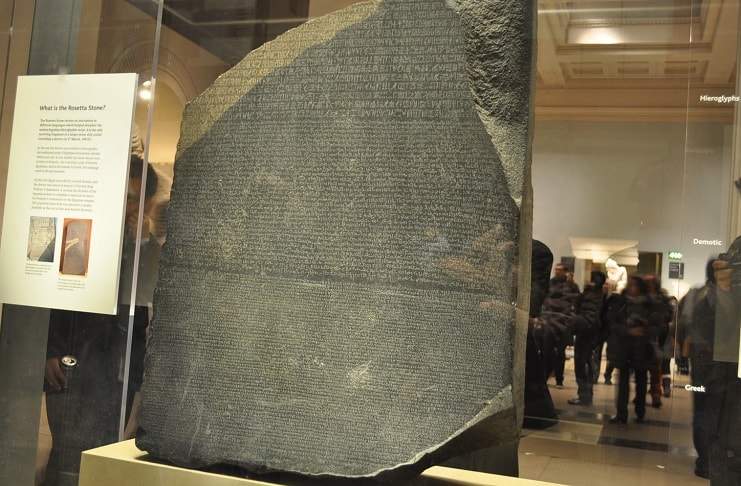Last Updated on 22/02/2025
Egypt is a constant destination for the world’s historians because it is, in many ways, the world’s largest living museum. People come to visit from far and wide because so much of what we know today has been influenced in one way or another by events or people with an Egyptian connection. Along with the early Roman and Greek civilizations, Egyptian history is one of the most important aspects of the ancient history of this world. To understand how and why the world came to be how it is, it is essential to know about these civilizations. One of the pivotal moments in understanding this history was the discovery of the Rosetta Stone in 1799.
- Discovered in 1799: Found in Rosetta, Egypt, during Napoleon’s campaign.
- Three Scripts: Text in hieroglyphics, demotic script, and Ancient Greek.
- Deciphering Key: Vital in unlocking the meaning of hieroglyphics.
- British Museum: On display in London since 1802.
- Cultural Impact: Crucial for understanding ancient Egyptian civilization.

Discovery
The Stone was discovered, as the name suggests, in the Egyptian town of Rosetta (known locally as Rashid), and was important because it was the first modern discovery of an ancient bilingual text. Indeed, the Stone itself bears the same text written three times: once in ancient Egyptian hieroglyphics, once in demotic script, and once in Ancient Greek. Its discovery was of massive benefit in enabling historical scholars to decipher the hieroglyphics that are present at many of the ancient sites which make up so much of Egyptian history and, in the present, represent the core of its thriving tourist trade.
See the Stone
If you visit Rosetta as part of an Egypt holiday, you will not be able to see the Stone there. Since 1802, it has, in fact, been on display in the British Museum in London, a spoil of British military victory over the French army who held control of the region at that time. Copies of the Stone were made and sent to historical scholars all over the world, to better enable an understanding of what the Stone could tell us about the history of the area and about ancient Egyptian civilization in general. The loss of the Stone, however, has not put an end to interest in Rosetta, which remains a fascinating site for anyone keen on Egyptian architecture.
Rosetta is home to perhaps more monumental residences than any other site in Egypt, and the uniqueness of these buildings is something that any visitor will be bound to comment upon. The residences are characterized by a specific style of brick: brown, trimmed, and pointed—a style of brick that is unique to the area and has led to no shortage of interest, as some mystery still surrounds how the bricks were made.
Within the residences, it is a delight to see how intricate the architecture was as far back as the Ottoman era—residences that would be considered quite luxurious even today were achieved with some ingenuity. Although many of the residences are at present being refurbished, some always remain open for visitors. Also of interest in Rosetta, the Abu Madour Tower is the spot from which French military historian Vivien Dinon witnessed the Battle of al-Qadir (in which Britain took control of the area), and the Hammam Azouz is worth visiting.


 Call
Call WhatsApp
WhatsApp Enquiry
Enquiry